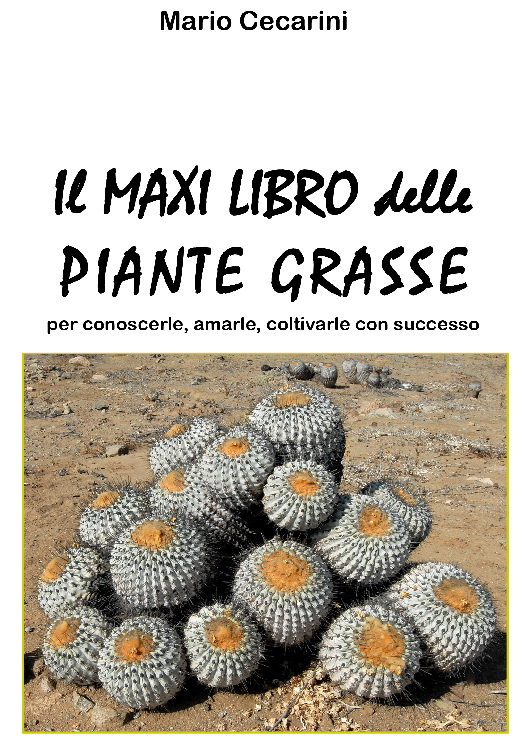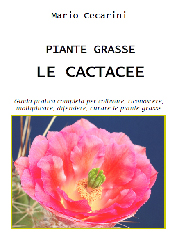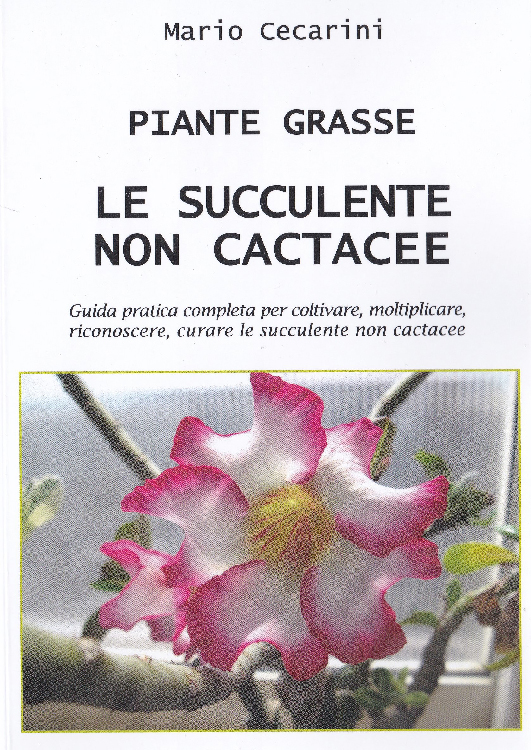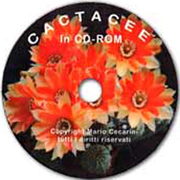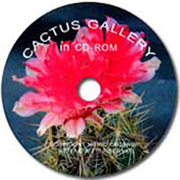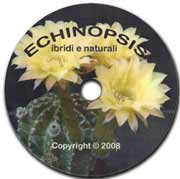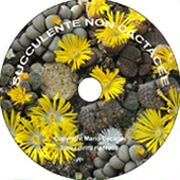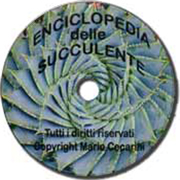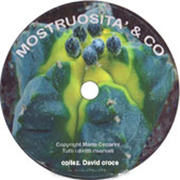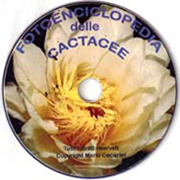|
SUBFAMILY 1: PERESKIOIDEAE. Presence of leaves and absence of glochids; seeds without aril.
GENERA: Pereskia. A spiny shrub that bears flowers which resemble those of old garden roses; its leaves are large and persistent. It has felt-like areoles with no glochids.
A very primitive form of cactaceous plant, not yet a real succulent, with tubular and woody trunk and branches. Flowers are borne at the tip of a pedicel.
Habitat: Southern Mexico, the Caribbeans, Central America, some Andean regions.
CULTIVATION: Grow in rich well-draining soil, in full sun or partial shade; water during the warmer months, occasionally in winter. The minimum temperature should not drop below 12°C or so, otherwise the leaves start falling; if this happens make sure the soil remains dry.
SUBFAMILY 2: MAIHUENIOIDEAE. A cespitose shrub with a C3 metabolism. The succulent stems are short, tubular or globose and the leaves persistent; each areole bears three spines. The solitary flowers appear near the apex.
Habitat: Argentina and Chile.
GENERA: Maihuenia. A cespitose slow-growing plant that eventually forms quite large cushions. The small leaves are persistent and from the numerous areoles three spines normally arise.
CULTIVATION: See Pereskia.
SUBFAMILY 3: OPUNTIOIDEAE. Presence of leaves and glochids.
GENERA: Austrocylindropuntia, Brasiliopuntia, Consolea, Cumulopuntia, Cylindropuntia, Grusonia, Maihueniopsis, Miqueliopuntia, Opuntia, Pereskiopsis, Pterocactus, Quiabentia, Tacinga, Tephrocactus, Tunilla. Opuntia is the most widespread genus.
CULTIVATION: Cylindropuntia: the genus is characterised by tubular stems. North American genera can withstand low temperatures down to 0°C as long as they are in a dry environment. Grow in humus-rich soil.
Tephrocactus: The pads are round-shaped. Their native habitat are the Andes mountains and they are quite difficult in cultivation due to their particular needs. They require well-draining sandy soil. Grow them outdoors during the colder months but provide shelter from excessive wet. During the growing season move them to a place in partial shade.
Opuntia: Tender to half-hardy, they’re best grown in large containers with rich, loose soil.
They all have glochids and, introduced by man, have become naturalised in many mediterranean regions across the globe.
The genus Pereskiopsis is comprised of plants that, unlike Pereskia, can indeed be considered succulents; their leaves can be either flat or cylindrical, persistent or deciduous. They bear spines and/or glochids. The flowers are without pedicels.
SUBFAMILY 4: CACTOIDEAE. A group of cespitose shrubs, either climbers or epiphytes, with fibrous or tuberous roots, stems that are not jointed and no glochids.
TRIBE 1: CALYMMANTHEAE. Shrubby plants that might grow to the size of small trees; they bear distinct areoles with whitish erect spines. The fleshy, indehiscent fruits have few or no areoles.
Habitat: Andes and Northern Peru.
GENERA: Calymmanthium.
TRIBE 2: HYLOCEREEAE. Epiphytic or climbing shrubs with adventitious roots and no glochids. The leaves are incospicuous; the flowers appear along the side of the stems and are followed by indehiscent, fleshy fruits.
Habitat: tropical forests of Central America.
GENERA: Disocactus, Epiphyllum, Hylocereus, Pseudorhipsalis, Selenicereus, Weberocereus.
TRIBE 3: CEREEAE. They have a columnar habit and robust spines. The stems are not segmented and the flowers are borne laterally on adult plants.
Habitat: Eastern South America.
GENERA: Arrojadoa,Brasilicereus, Cereus, Cipocereus, Coleocephalocereus, Melocactus, Micranthocereus, Pilosocereus, Praecereus, Stephanocereus, Uebelmannia.
TRIBE 4: TRICHOCEREEAE. They bear lateral or sub-apical flowers; some species develop a cephalium at maturity.
Habitat: Galapagos Islands and South America, austral hemisphere only.
GENERA: Acanthocalycium, Arthrocereus, Brachycereus, Cephalocleistocactus, Cleistocactus, Denmoza, Discocactus,Echinopsis, Espostoa, Espostoopsis, Facheiroa, Gymnocalycium, Haageocereus, x Haageoespostoa, Harrisia, Lasiocereus, Leocereus, Matucana, Mila, Oreocereus, Oroya, Pygmaeocereus, Rauhocereus, Rebutia, Samaipaticereus, Weberbauerocereus, Yungasocereus.
TRIBE 5: NOTOCACTEAE. The diurnal flowers appear on top of the woolly apex and have a bilateral symmetry; the fruits that follow are usually dry. The areoles are covered with bristles.
Habitat: South America.
GENERA: Austrocactus, Blossfeldia, Cintia, Copiapoa, Eriosyce, Eulychnia, Frailea, Neowerdermannia, Parodia.
TRIBE 6: RHIPSALIDEAE. Epiphytes or lithophytes showing either a drooping or creeping habit; none are climbers. Laterally borne flowers bloom during the day but stay open at night. Fleshy, indehiscent fruits
Habitat: Western South America with some extending to Central and North America.
GENERA: Hatiora, Lepismium, Rhipsalis, Schlumbergera.
TRIBE 7: BROWNINGIEAE. Very spiny columnar plants with lateral, medium to large-sized flowers, mostly nocturnal. The areoles have spines or bristles. The fruits are fleshy and indehiscent.
Habitat: Andean range of South America and Galapagos Islands.
GENERA: Armatocereus, Browningia, Jasminocereus, Neoraimondia, Stetsonia.
TRIBE 8: PACHYCEREEAE. Columnar cacti developing an apical or lateral cephalium once mature. The mostly nocturnal flowers arise laterally from a sub-apical region or from the cephalium if present and are followed by fleshy fruits, either dehiscent or not.
Habitat: Mexico, Southwestern U.S., also the Caribbeans, Central and South America to Venezuela.
GENERA: Acanthocereus, Bergerocactus, Carnegiea, Cephalocereus, Corryocactus, Dendrocereus, Echinocereus, Escontria, Isolatocereus, Leptocereus, x Myrtgerocactus, Myrtillocactus, Neobuxbaumia, x Pacherocactus, Pachycereus, Peniocereus, Polaskia, Pseudoacanthocereus, Stenocereus.
TRIBE 9: CACTEAE. Solitary or cespitose cactuses with oval areoles, small to medium-sized flowers borne just below the apex of the stem followed by fleshy fruits.
Habitat: U.S., Mexico, Canada, the Caribbeans, Venezuela, Colombia.
GENERA: Acharagma, Ariocarpus, Astrophytum, Aztekium, Cochemiea, Coryphantha, Echinocactus, Echinomastus, Epithelantha, Escobaria, Ferocactus, Geohintonia, Leuchtenbergia, Lophophora, Mammillaria, Mammilloydia, Neolloydia, Obregonia, Ortegocactus, Pediocactus, Pelecyphora, Sclerocactus, Stenocactus, Strombocactus, Thelocactus, Turbinicarpus.
N.B. Classification developed by the I.C.S.G. (INTERNATIONAL CACTACEAE SYSTEMATICS GROUP), a working group under the I.O.S. (International Organization for Succulent plant study).
|








